Did you know? |
Only 3 manufacturers are offering oscilloscopes with a bandwidth greater than 50 GHz: Keysight, Tektronix and Teledyne LeCroy. Read more...
Latest Oscilloscope News |
USB Oscilloscope: 8 analog + 16 digital Channels + flexible Resolution
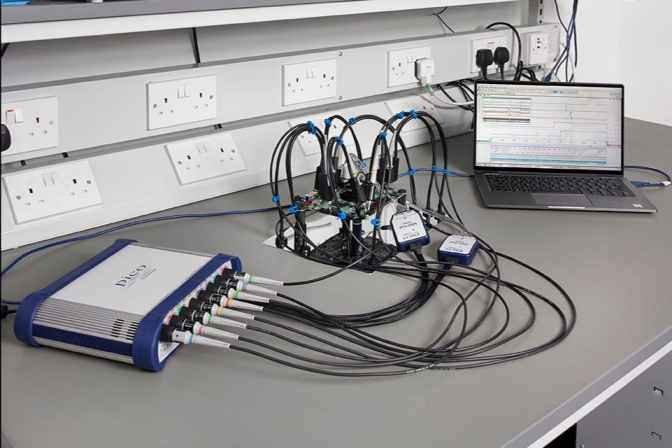 24 February 2020 – Pico Technology announced the PicoScope 6000E Series FlexRes oscilloscopes, featuring 8 channels with 500 MHz bandwidth, 16 digital channels, and resolution of 8, 10 or 12 bits. The products work with PicoScope 6 application software, which takes full advantage of the latest PC performance and display capabilities, showing clean, crisp waveforms on screens of any size and resolution.
24 February 2020 – Pico Technology announced the PicoScope 6000E Series FlexRes oscilloscopes, featuring 8 channels with 500 MHz bandwidth, 16 digital channels, and resolution of 8, 10 or 12 bits. The products work with PicoScope 6 application software, which takes full advantage of the latest PC performance and display capabilities, showing clean, crisp waveforms on screens of any size and resolution.
Rapid Validation of Timing Solutions in Wireless and High-Speed Design
![]() 10 February 2020 - Keysight Technologies and Silicon Labs announced a collaboration that streamlines the validation of timing solutions critical in the development of system-level designs for wireless communications, high-speed digital, medical imaging and automotive applications. The new solutions allows a quickly and cost-effectively characterization of the performance of clocks and oscillators.
10 February 2020 - Keysight Technologies and Silicon Labs announced a collaboration that streamlines the validation of timing solutions critical in the development of system-level designs for wireless communications, high-speed digital, medical imaging and automotive applications. The new solutions allows a quickly and cost-effectively characterization of the performance of clocks and oscillators.
Measuring Power Supply Noise Rejection in Oscillators
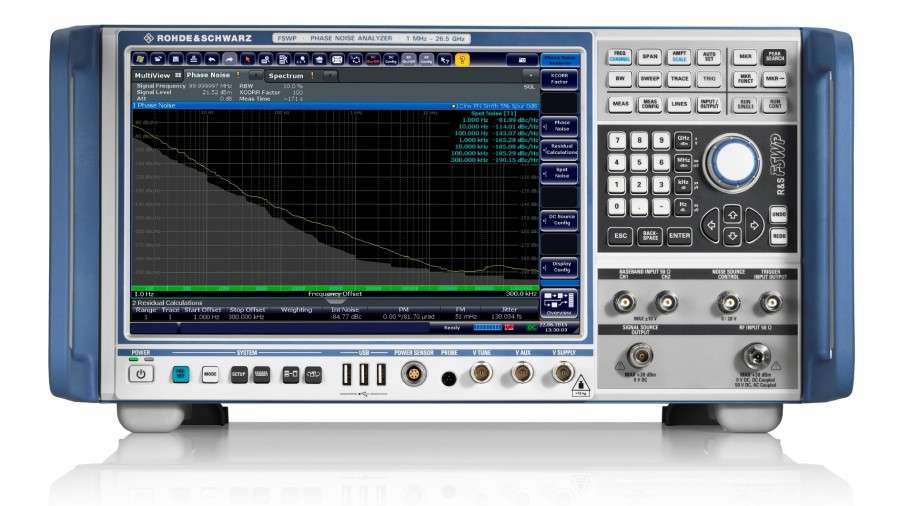 03 February 2020 – Epson and Rohde & Schwarz developed a test procedure for measuring power supply noise rejection to bring clarity and precision to real-world signal integrity design challenges. The companies demonstrated the procedure and summarized data from Epson’s SG3225EEN low noise differential crystal oscillator measured by the R&S FSWP phase noise analyzer from Rohde & Schwarz at DesignCon 2020 in January.
03 February 2020 – Epson and Rohde & Schwarz developed a test procedure for measuring power supply noise rejection to bring clarity and precision to real-world signal integrity design challenges. The companies demonstrated the procedure and summarized data from Epson’s SG3225EEN low noise differential crystal oscillator measured by the R&S FSWP phase noise analyzer from Rohde & Schwarz at DesignCon 2020 in January.
First Electrical Test Solution for USB4
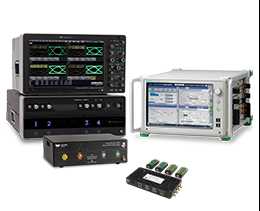 30 January 2020 – Teledyne LeCroy announceed the QualiPHY USB4 Electrical Transmitter (Tx) and Receiver (Rx) Compliance Test Software (QPHY-USB4-TX-RX) for its LabMaster 10 Zi-A and WaveMaster/SDA 8 Zi-B oscilloscopes used in conjunction with Anritsu’s Signal Quality Analyzer-R (SQA-R) MP1900A BERT. This announcement follows Teledyne LeCroy’s shipment of the first (and only) USB4 Protocol Analyzer in September of 2019.
30 January 2020 – Teledyne LeCroy announceed the QualiPHY USB4 Electrical Transmitter (Tx) and Receiver (Rx) Compliance Test Software (QPHY-USB4-TX-RX) for its LabMaster 10 Zi-A and WaveMaster/SDA 8 Zi-B oscilloscopes used in conjunction with Anritsu’s Signal Quality Analyzer-R (SQA-R) MP1900A BERT. This announcement follows Teledyne LeCroy’s shipment of the first (and only) USB4 Protocol Analyzer in September of 2019.
New Approach for Signal Integrity Debugging
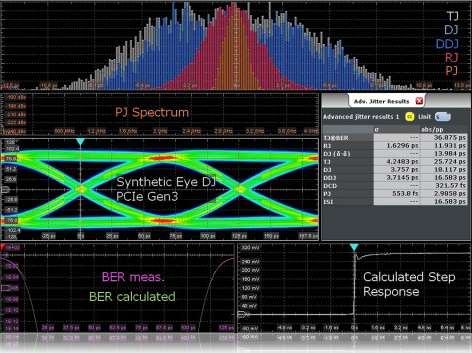 27 January 2020 - A new approach helps development engineers gain more insight into the individual jitter components of their transmission interface. Now they can separate jitter into its random and deterministic components and view results flexibly for effective debugging. The Rohde & Schwarz decomposition algorithm uses a parametric signal model for accurate measurements and additional result representations.
27 January 2020 - A new approach helps development engineers gain more insight into the individual jitter components of their transmission interface. Now they can separate jitter into its random and deterministic components and view results flexibly for effective debugging. The Rohde & Schwarz decomposition algorithm uses a parametric signal model for accurate measurements and additional result representations.
Siglent launched new 2/4-channel 100-350Hz Oscilloscopes
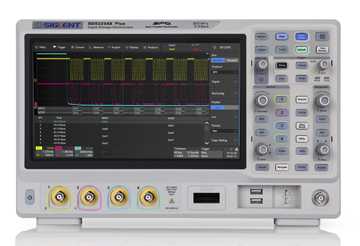 16 January 2020 - Siglent introduced the new SDS2000X Plus Digital Oscilloscope Series consisting of four models: one 2-channel 100MHz bandwidth (software upgradeable to 350MHz) and three 4-channel models (100/200/350MHz.) The 350MHz models can be upgraded to 500MHz on two independent channels. A large 10.1" capacitive touch-screen supports multi-touch gestures.
16 January 2020 - Siglent introduced the new SDS2000X Plus Digital Oscilloscope Series consisting of four models: one 2-channel 100MHz bandwidth (software upgradeable to 350MHz) and three 4-channel models (100/200/350MHz.) The 350MHz models can be upgraded to 500MHz on two independent channels. A large 10.1" capacitive touch-screen supports multi-touch gestures.
Differential Probing Solution for DDR5/LPDDR5
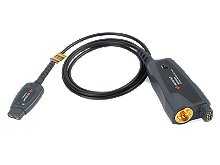 20 December 2019 - Keysight Technologies announced the MX0023A InfiniiMax RC, a new high speed differential probing solution for Double Data Rate 5 (DDR5) and Low Power Double Data Rate 5 (LPDDR5). The MX0023A InfiniiMax RC probe features a bandwidth of up to 25 GHz and an RC input impedance profile for extremely low mid-band loading.
20 December 2019 - Keysight Technologies announced the MX0023A InfiniiMax RC, a new high speed differential probing solution for Double Data Rate 5 (DDR5) and Low Power Double Data Rate 5 (LPDDR5). The MX0023A InfiniiMax RC probe features a bandwidth of up to 25 GHz and an RC input impedance profile for extremely low mid-band loading.
Oscilloscope Basics |
A Comparison between Oscilloscopes and Spectrum Analyzers
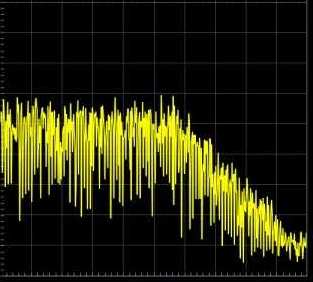 Whether it is for a land survey searching for minerals on Earth, or for a space exploration in search of alien life forms, the analysis of any signal boils down to looking at its time and frequency information. While an oscilloscope displays a signal with respect to time, a spectrum analyzer shows it with respect to frequency. Both of these tools are very important in any signal analysis application. This article explains the difference between oscilloscope and spectrum analyzer using examples.
Whether it is for a land survey searching for minerals on Earth, or for a space exploration in search of alien life forms, the analysis of any signal boils down to looking at its time and frequency information. While an oscilloscope displays a signal with respect to time, a spectrum analyzer shows it with respect to frequency. Both of these tools are very important in any signal analysis application. This article explains the difference between oscilloscope and spectrum analyzer using examples.
Oscilloscope Background |
Oscilloscope History and Milestones
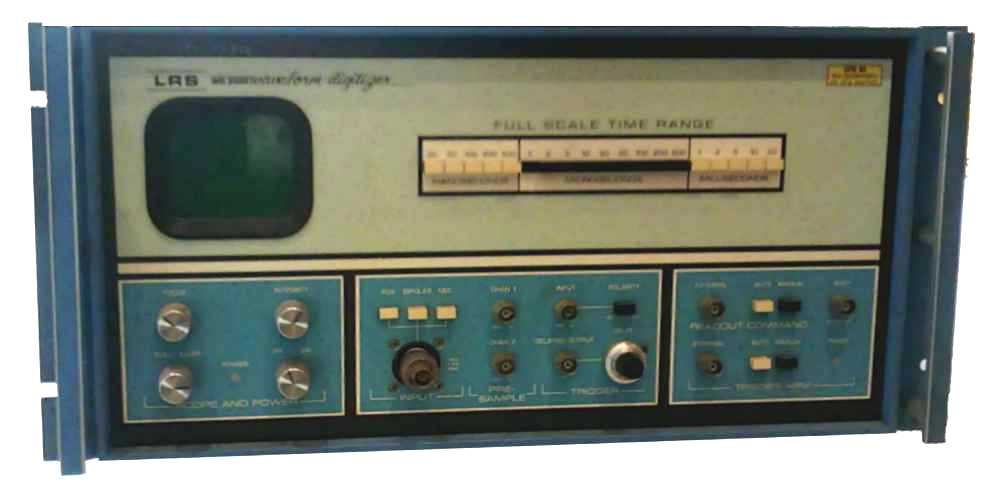 Oscilloscopes have been invented in the 1920s. Up to now this instrument encountered many innovations. In the beginning the most important manufacturers have been General Radio, DuMont, General Electric and Radio Corporation of America. Later Cossor and later Solartron dominated the market. Today the main players are Keysight, Tektronix and Teledyne LeCroy. Below we listed some important oscilloscope milestones.
Oscilloscopes have been invented in the 1920s. Up to now this instrument encountered many innovations. In the beginning the most important manufacturers have been General Radio, DuMont, General Electric and Radio Corporation of America. Later Cossor and later Solartron dominated the market. Today the main players are Keysight, Tektronix and Teledyne LeCroy. Below we listed some important oscilloscope milestones.

 How to resolve AdBlock issue?
How to resolve AdBlock issue?